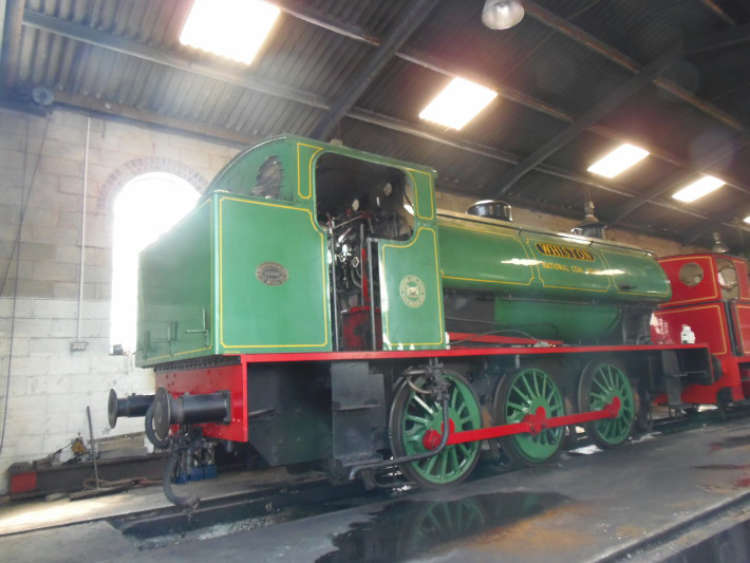
8D ASSOCIATION
The 8D Association is dedicated to promoting the history of the railways of South Lancashire, Merseyside and North Cheshire.
NCB Bold Colliery – St Helens.
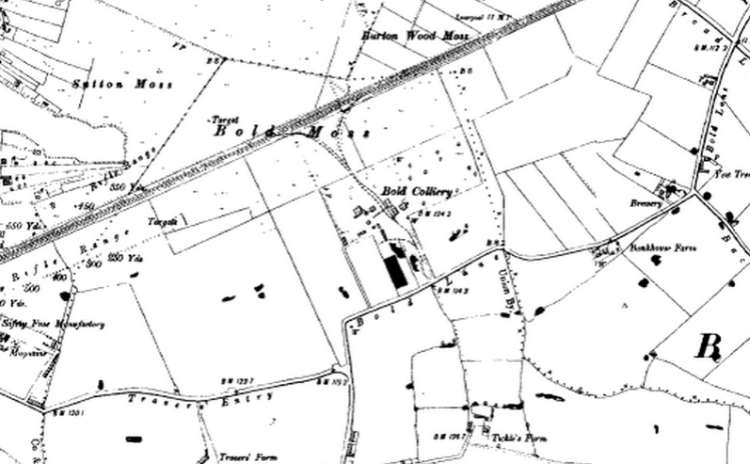
The sinking of the first shafts at Bold began in 1875 under the direction of the Orrell Coal and Cannel Company. The directors of the company would, on 29th June 1876 form a new company called simply the Bold Colliery Company to oversee the development of the mine. Sinking the No1 and No2 shafts was both dangerous and difficult, the difficulty was flooding which caused suspension of the work as early as mid 1875. By this point the No1 shaft was at a depth of around 600 yards and No2 was around 200 yards. Work must have continued because on 28th March 1877 an agreement was drawn up with the LNWR for a connection with the adjacent Liverpool to Manchester line half way between St Helens Junction station and Collins Green station. The connection and associated sidings were to open in January 1878 but even by March were only being used for construction materials to be brought to the mine.

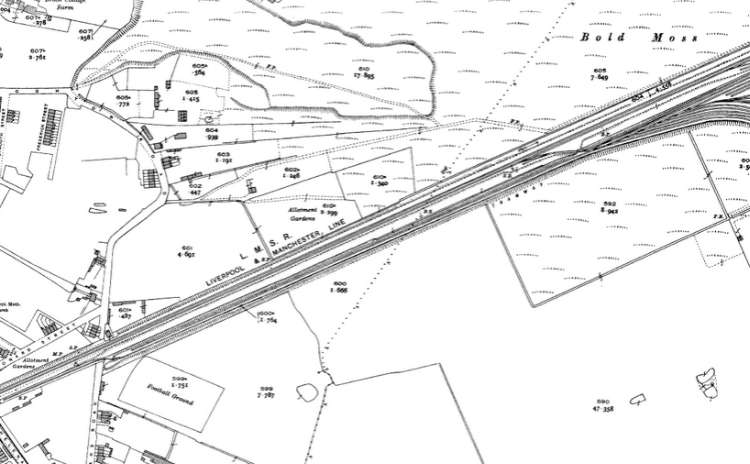
The geological problems caused the company serious financial problems and documents dated 14th February 1879 show the signal box and associated sidings closed, with the connection to the main line removed due to the company being bankrupt. By April 1879 the whole plant was up for sale. In 1880 the owners of the neighbouring Collins Green Colliery purchased the Bold site and continued the sinking of the No1 and No2 shafts a small amount of coal was being produced by the latter part of 1880 and the shafts were completed and operational by 1883. By this point some engines had been purchased by the company and the Bold site was reconnected to the main L & M line. The first recorded engine at the site was Pemberton, purchased from the nearby Vulcan Foundry this loco was joined by a second hand loco built by Manning, Wardle and company of Leeds a short while later.
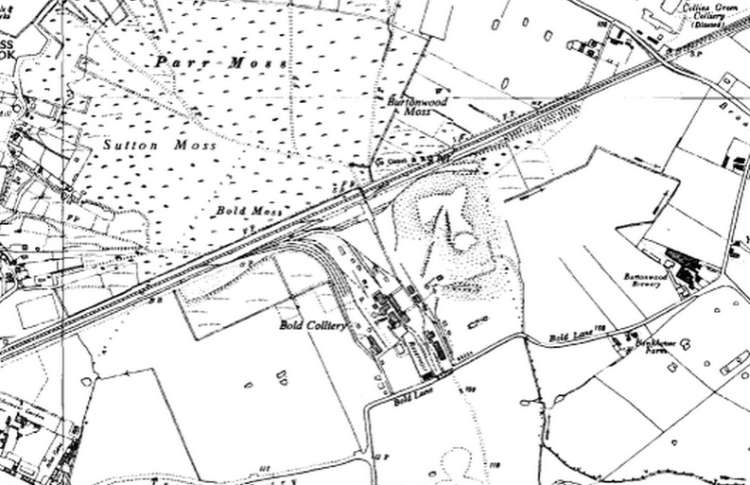
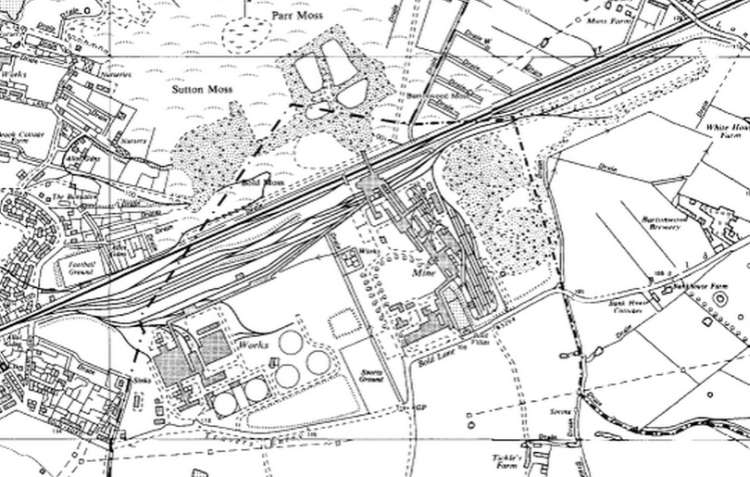
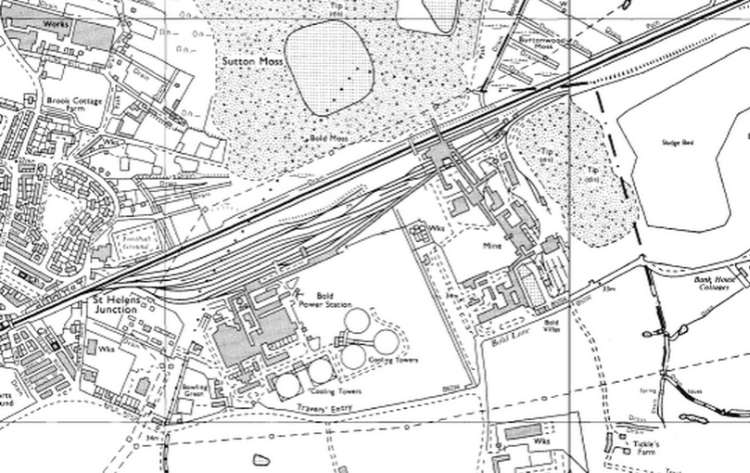
Production at Bold was still low and the two collieries shared their motive power until No3 shaft was sunk in 1890. It seems at this point that the colliery at Bold started having dedicated motive power with two four-coupled saddle tanks being purchased from Vulcan in 1893. The two sites enjoyed good production for the next forty years until the Collins Green Colliery Company Ltd went into liquidation in 1940. Prior to this the mine at Bold had been enlarged with further sidings and loading facilities as the production increased. An interesting development occurred in July 1920 with the purchase of a 1ft 10in gauge petrol driven locomotive which was to be used on a narrow gauge railway from Helena Road to the mine, for the transportation of miners from the area around St Helens Junction. The railway was almost a mile in length and ran alongside the L & M line for most of its length on a small embankment and then turned south to run alongside the colliery sidings before terminating near the pit head where a small engine shed was provided.

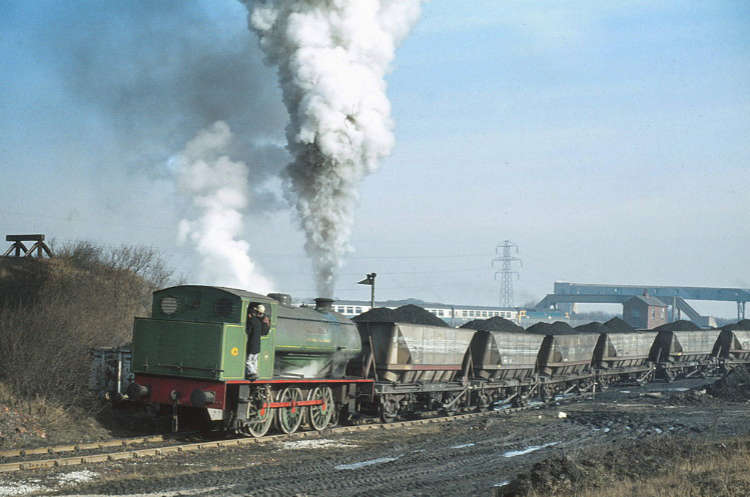
(To view more of Gareth’s interesting Flickr photostream click here)
When the Collins Green Colliery Company went into liquidation in 1940 the Collins Green site was closed for the production of coal but retained for pumping purposes with the Bold Colliery site closing. After a 4 month closure the Bold site was purchased by the Sutton Heath and Lea Green Colliery Company and production resumed. The motive power from both sites now being based at Bold.
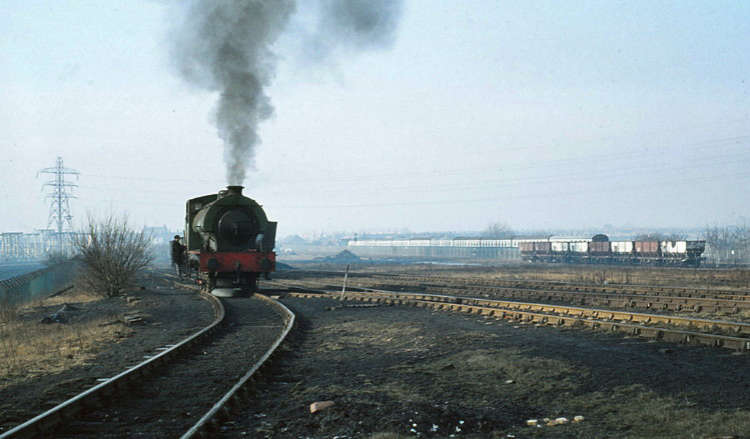
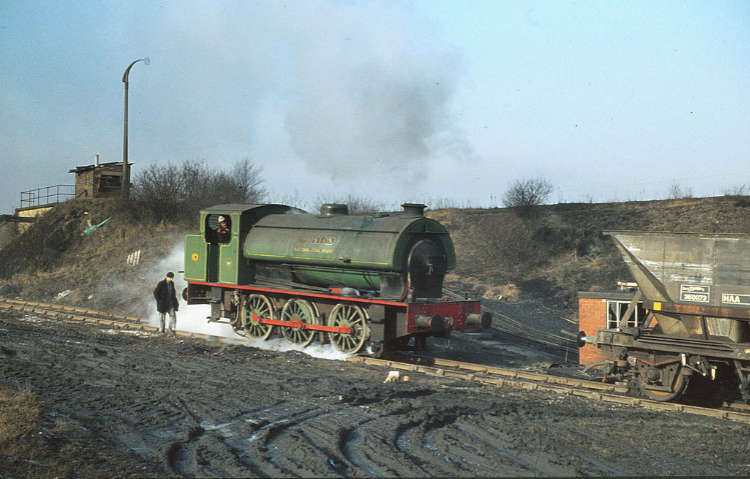

(To view more of Gareth’s interesting Flickr photostream click here)
Bold became property of the National Coal Board on 1st January 1948 as part of the No3 (St Helens) Area of the North West Division. Improvements at the mine started almost immediately with the deepening of No1 and No3 shafts starting in 1948 and being completed in 1956. In 1950 St Helens Corporation granted permission for 2 power stations to be constructed on land directly to the west of the colliery and so Bold Power Stations A and B were constructed. ‘A’ was completed first and commissioned between 1953 and 1957 with ‘B’ coming on line by 1960. The idea being that coal could be delivered from the colliery directly via conveyor thus cutting down on transport costs. Also any coal not required by the power station could be moved from the site by rail and a new connection with the power stations own exchange sidings was laid so coal could be moved by railway wagon in the case of a conveyor failure.
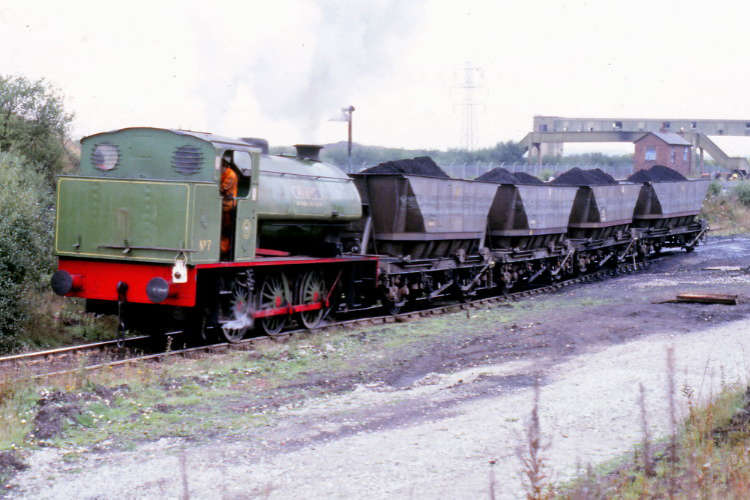
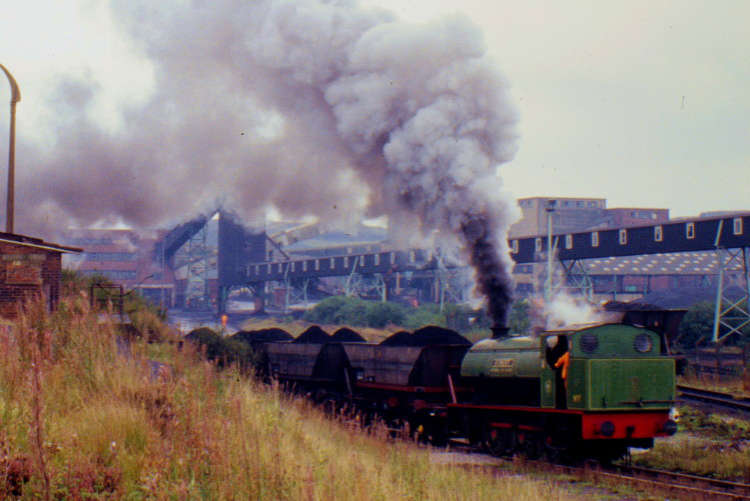
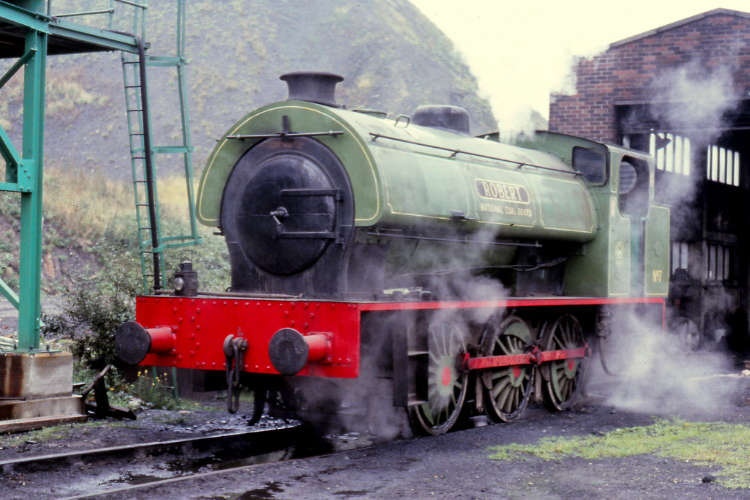
(To view more of Pete’s extensive Flickr Photostream click here).
In the 1950’s the motive power used at the colliery was put in the hands of diesel shunters and a new locomotive shed to house 3 locos was provided. Both the diesels were built by the North British Locomotive Company of Glasgow and numbered D2 and D3 with a steam engine retained for use when a diesel was out of service. The power station also purchased its own locos with one John Fowler built diesel shunter arriving in 1951 for movements within their own exchange sidings which were connected to the Liverpool and Manchester line directly east of St Helens Junction station. This was joined by a second locomotive, No2 from Ince Power Station near Ellesmere Port in 1961.
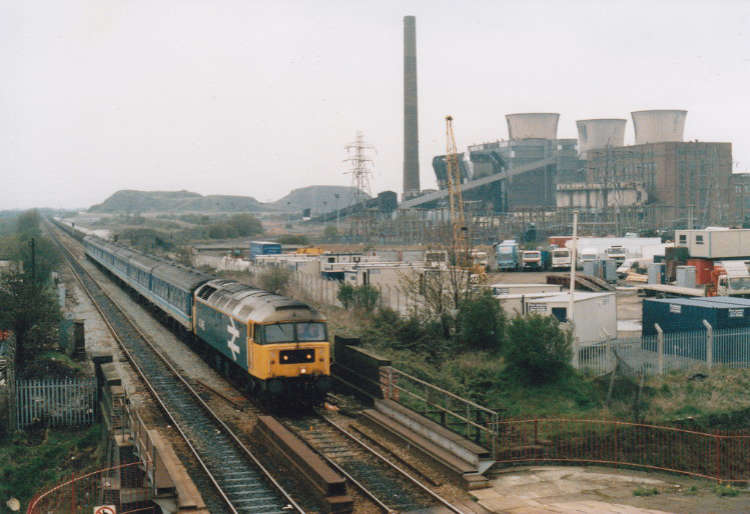
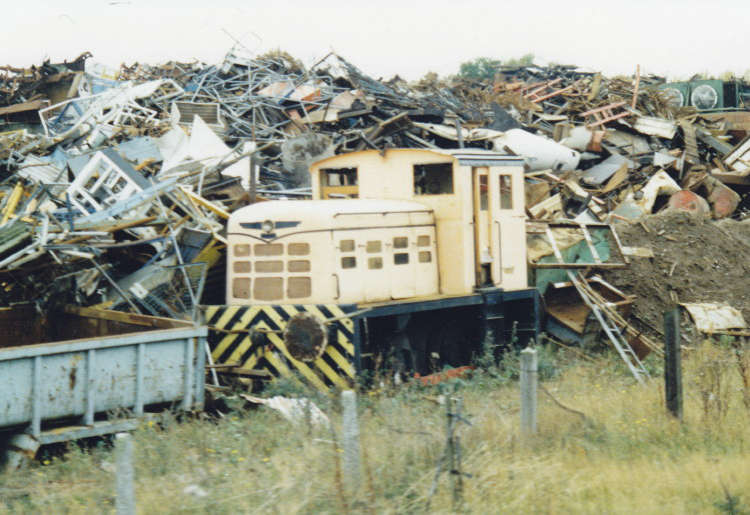
It was with the introduction of the Merry Go Round system in late 1973 or early 1974 that an interesting development took place at Bold Colliery. The diesel shunters D2 and D3 could not haul the new rakes of wagons up the steep incline from the colliery to the exchange sidings. So steam engines were re-introduced and would continue to work at the colliery until the early 1980’s. Austerity saddle tank Whiston, which was already the spare loco on site was brought back into regular use with Allison, another saddle tank being transferred to the colliery on 3rd April 1974. As late as February 1978 a further ex War Department loco, Robert was transferred here from Littleton Colliery, Staffordshire. Steam working continued at the colliery site until 27th September 1982 with the arrival of a 400HP diesel hydraulic shunter from Hem Heath Colliery near Stoke on Trent. Bold was one of the last collieries in the country using steam engines. The colliery closed in November 1985 after the deterioration of the faces and heavy losses during the miners strike of 1984/85. The power station lasted longer with the ‘B’ station being the final part to close in 1991, coal was then being brought in from pits further afield via the Liverpool and Manchester line. The mine and power station were subsequently demolished and a housing estate with a country park now occupies the site. There was a happy ending for the two steam locos last used at Bold, in March 1983 Whiston was removed to the Foxfield Railway and has undergone a rebuild and is currently operational. Robert initially went to the Chatterley Whitfield Mining Museum in April 1986 and was taken to the National Coal Mining Museum in Wakefield following the closure of the Chatterley site.
